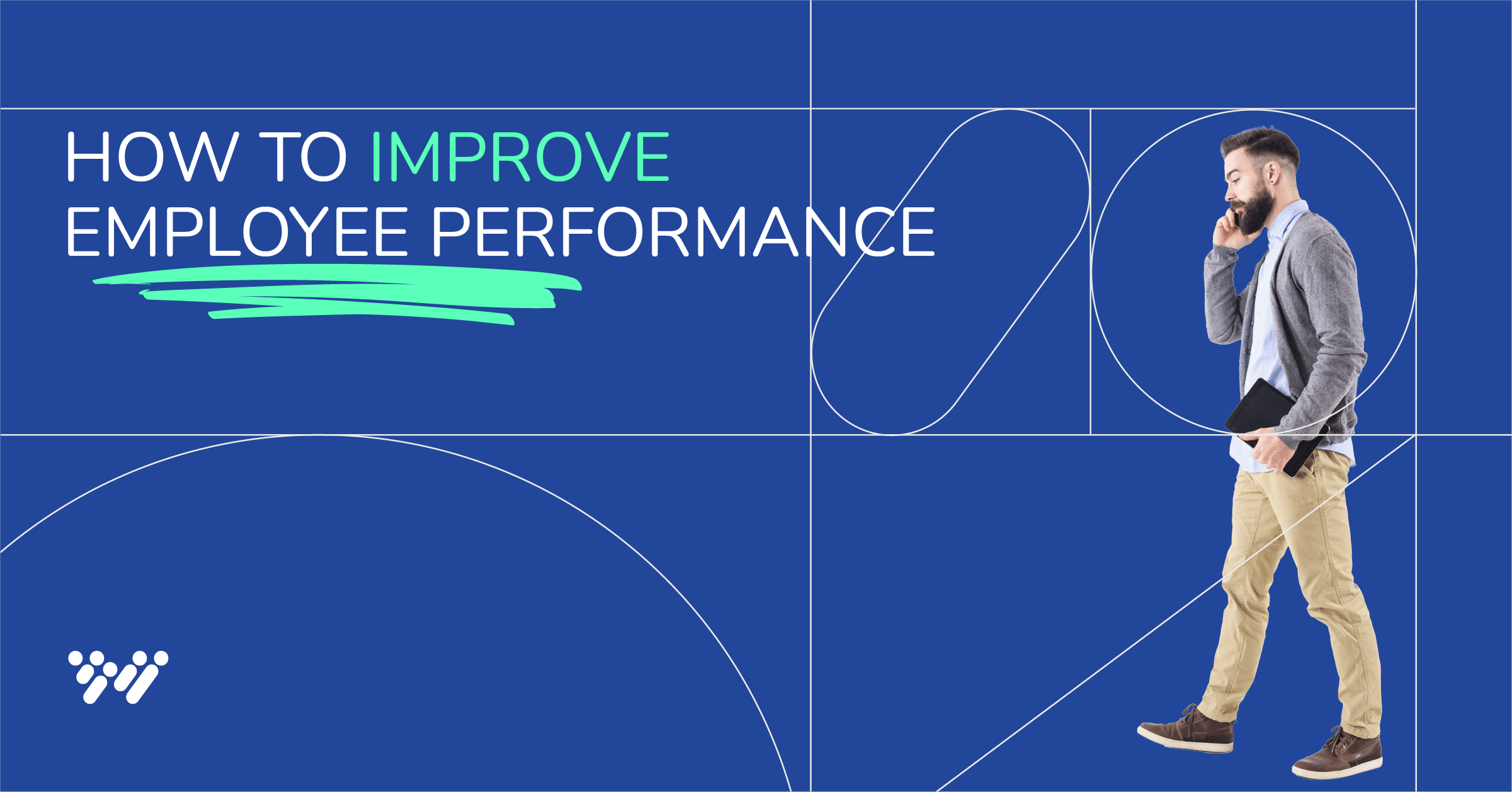Just how happy are the employees at your organization? According to a Pew Research survey, U.S. businesses have a long way to go when it comes to learning how to improve employee morale and job satisfaction. Only one in two U.S. workers consider themselves very satisfied, and only 37% are somewhat satisfied with their jobs.
So, how does this affect your business?
If left unchecked, a disengaged employee can lower productivity and revenue before eventually leaving the organization, incurring additional recruitment costs after lowering team morale and poisoning your culture. While many factors contribute to employee job satisfaction and morale, many are within your control. Understanding how to improve employee morale and job satisfaction starts with knowing what makes your employees happy and how to rectify any shortcomings.
Organizations with more engaged employees see 23% more profit than those with the least engaged employees. Gallup
In this guide, we explore the impact of employee satisfaction on businesses and how you can improve employee morale and job satisfaction to lower turnover, improve productivity, and create a workplace culture poised for growth.
We’ll cover:
Why employee morale and job satisfaction matter
Unhappy employees can create significant — often irreparable problems. Disgruntled team members may not work as hard, be as loyal, or engage in healthy relationships at work. They’re also likely to be among the 42% of employees who say they plan on leaving their jobs in the next six months. However, even if they do stick around, they may sour the satisfaction of others with their constant negativity and bristling personalities.
While unhappy employees may have very valid reasons for how they feel, the resulting consequences can be costly. The average cost of hiring a new employee sits around $4,700, with training making up $774 per new hire, but according to benchmarking data from SHRM, many employers estimate the true cost to be upward of three to four times a position’s salary.
A lack of employee satisfaction and low morale can have a domino effect, especially for employers who don’t understand where this discontentment is coming from or refuse to make corrections, leading to spikes in turnover and hiring costs.
Conversely, when employees feel good about their jobs, it affects every dimension of how they show up. Productivity rises. They bring their best and most creative ideas to the tasks at hand. They may even share how much they love their jobs with others, boosting your company’s reputation and attracting new, talented employees. In fact, studies show that employee-referred candidates are less likely to quit than candidates from the general population.
Just how much money could you save with a pre-hire assessment like Wonderlic?
Find out with our ROI calculator.
Key factors that influence employee morale and satisfaction
Unhappy employees may cite several reasons why they don’t enjoy their jobs. Any of these factors can make or break the relationships between your employees and your organization. While not exhaustive, this explores the sources of many complaints that can erode trust and happiness at work.
Compensation
Studies show that higher-paid employees are generally happier than their lower-paid counterparts. These high earners have positive things to say about benefits, training opportunities, and the chance to learn skills. They also tend to feel more valued at work.
Companies can find out how their employees feel about their pay through anonymous surveys, as well as do research by monitoring competitors’ job openings. If there’s a significant gap between the market and what you’re offering, it may be time to raise pay or add new benefits.
Organizations with no trouble recruiting in the past 12 months attribute their success to a positive workplace culture and competitive benefits. SHRM
At the end of the day, people work to pay bills; not being able to afford their lifestyle or feeling that they work too much for what they make can lead to unhappiness. Plus, a low salary makes it that much easier for a better-paying company to lure them away.
Employee surveys from Pew Research reveal that lower-paid workers and people from marginalized groups are more likely to report unsafe working conditions that lead to job dissatisfaction.
Work environment
How employees feel about their workspace influences their overall job satisfaction. A safe, healthy work environment that doesn’t stress employees can evoke positive feelings. Conversely, a toxic work environment can erode the employee experience. A toxic work environment may include gossip, favoritism, unsafe working conditions, unfair distribution of work, or even illegal workplace practices such as discrimination or sexual harassment. Because not every employee will feel comfortable sharing their experiences, these issues can often go unresolved for long periods, further affecting the workplace and making it hard to contain and resolve the root causes.
Companies with a reputation for being toxic may find it difficult to hire new talent and keep the great team members they already have. They can also face legal or civil penalties for mistakes that violate employment or workplace safety laws.
Work-life balance
Research shows that workplace flexibility through work sharing, remote work, and staggered scheduling leads to a better sense of work-life balance in employees. While having a good work-life balance used to mean giving employees more time off, it’s now evolved to include being more understanding of family obligations, offering flexible schedules, and being open to remote work (depending on the industry),
Curious how a four-day workweek could affect your organization’s ability to hire and retain top talent? Grab our definitive guide.
Lack of opportunities
The idea of working a “dead-end” job appeals to virtually nobody. It’s no surprise that employees who feel hopeful about their futures are happier at work. Whether it’s a promotion with higher pay or a mentorship program that helps them develop new skills and find more purpose in their role, companies must continue offering growth opportunities to all employees.
Hiring mismatch
Sometimes, a perfectly good employee gets hired for the wrong position. This can be just as disruptive as hiring a bad employee, as a mismatched employee won’t feel engaged or find purpose in their work. A creative individual may become frustrated by mundane, rote tasks, whereas a highly methodical thinker may become stressed in a job that requires too much out-of-the-box creativity. Whatever the details, not hiring well can lead to low productivity, high turnover, and other issues that extend to the larger workplace environment.
Relationships
Most full-time employees spend at least 45 hours a week at their jobs, including lunches and work outings. For most people, this is significantly more time than they spend with children or spouses, so it’s logical that they would develop deep bonds with their coworkers. In fact, surveys show that 42% of happy workers credit relationships at work for at least part of their enjoyment. Without an opportunity to socialize with like-minded peers or teammates, job dissatisfaction can kick in.
Appreciation and feedback
Getting a paycheck may seem like a form of “thanks” all on its own, but many employees crave more pronounced signs of appreciation throughout their careers. Whether it’s regular and supportive performance reviews or bonuses for going above and beyond, team members appreciated for their work may find it easier to stick with a company for the long term. Employees want to hear from their managers about how well they’re doing. While not all feedback can be good feedback, 80% of employees who receive it often enjoy it.
Lack of support
Every role has its frustrations. So, how should a company respond when it comes to managerial and organizational support? Outdated computing systems, lack of access to learning tools, and confusing administrative tasks are all examples of things that can frustrate an employee. If workers aren’t supported with the right tools and technologies, they can easily feel discouraged.
Likewise, managers have an important role to play. Without direct managerial support, workers may feel unappreciated, unheard, or unmotivated. The same can be said about not providing upward mobility opportunities, which most employees crave. If they have asked and not received, they may perceive their managers and organizations as unsupportive.
Job security
Few people would find it easy to work at a job that could be taken from them at any time, making job security a top factor in whether a team member stays or starts looking for alternative opportunities. Even just rumblings of mass layoffs can send employees scrambling to find a newer, safer role. Companies should be mindful of how their organization handles restructuring, sales, or other changes and do their best to mitigate harmful rumors.
How to measure employee morale and job satisfaction
Some employees may be very outspoken about their discontentment, making it easier to approach resolutions head-on. However, out of fear of retaliation, most team members hold back their feelings of dissatisfaction, leaving them to fester and exacerbate, eventually resulting in a resignation. Here are some strategies for better understanding how your employees truly feel.
Conduct employee satisfaction surveys
With anonymous feedback forms, you can get insights straight from employees. Ask them about their feelings on a number of topics, including those satisfaction factors listed above. Inquire about their overall happiness and also the specifics of their jobs, teams, and the organizational culture so you can more easily connect any grievances to their source. Be sure to conduct these at least annually, if not more often, to build a positive company culture and catch opportunities for improvement while they’re still resolvable.
Check online reviews
Employees have become increasingly comfortable with airing their grievances online, leading to an increase in business reviews on sites like Glassdoor and conversations in forums like Reddit. This new transparency can help managers learn about workplace issues in a way other methods can’t provide. Just be sure to take feedback with a grain of salt, as it’s only one side of the story, and disgruntled employees may be more likely to leave biting reviews. Thankfully, many employees leave positive reviews on these sites, helping you also learn what’s working well.
Implement stay interviews
Unlike exit interviews, which ask about experiences as a hire is leaving, stay interviews do the opposite. They help managers better understand what inspires their best team members to work hard and come back to work each day. These interviews can be more informal, resembling a casual conversation in a setting that’s neutral for both parties.
Managers who conduct stay interviews can either have a predetermined list of questions or come up with their own questions on the fly so that the conversation follows a more back-and-forth format and less of an interview approach. Not only can stay interviews give you valuable information on ways to boost employee morale, enhance employee engagement, and improve employee motivation, but the mere act of conducting them can have a positive effect. In one survey, around two in five employees who left their jobs claimed they didn’t have a stay interview during their tenure but that having one could have made a tangible difference in their decision to leave.
Measure referral and turnover rates
Objective data can help you gauge employee satisfaction. One such KPI is employee referral numbers. A high referral rate, or one that’s trending upward, can signify a positive work environment that team members like so much they want to share with others. It can also hint at employee advocacy, where team members believe in the organization so much they can’t help but talk to friends and peers. Also, the best referrers tend to be loyal employees, the type that show up and put in the work. If an employee refers a friend, they aren’t very likely to have one foot out the door. Likewise, if your company is experiencing a high turnover rate, there are likely shared contributing factors that warrant digging deeper.
6 ways to improve employee morale and job satisfaction
Based on the factors above, it may be easy to see some of the more direct ways you can improve job morale and employee engagement. Below, we’ll explore actionable strategies on how to improve employee morale and job satisfaction to create a workplace culture where employees feel valued and motivated.
For some businesses, it may simply be a matter of increasing pay to keep up with inflation. However, in other instances, more digging into the data is warranted, and a pre-hire assessment tool like Wonderlic can reduce much of the guesswork that goes into hiring the right person — so you set your employees up for a satisfying job experience from the get-go.
1. Measure overall fit before hiring
Unlike most screening tools that evaluate isolated factors like personality or experience, Wonderlic’s pre-hire assessment, Wonderlic Select, measures candidates on multiple dimensions: cognitive abillity, personality, and motivation. Together, these elements have been proven to be the most predictive of on-the-job performance and overall fit. Here’s how each works in predicting job satisfaction and improving employee morale.
- Cognitive ability measures whether someone can do a certain job and to what extent. If an employee is underqualified for a role, they may quickly become stressed and overwhelmed. Likewise, overqualified applicants may not feel challenged and can quickly grow bored, leading to low job satisfaction and high turnover.
- A good personality fit ensures your new hire meshes well with your team and the culture. Conversely, the wrong personality may clash with your team and company, dragging others down with them.
- Motivation is essential for any role. If there’s a mismatch between what employees intrinsically want and like to do and what their role demands, they’re much more likely to be dissatisfied.
Some positions, like software developers, may require more cognitive ability. Whereas others, like sales reps, require specific personalities to thrive. Wonderlic Select uses the latest industrial-organization (I/O) psychology to give recruiters a single score for candidates based on their overall fit for specific roles. With Wonderlic, you can get an objective layer of data to make informed hiring decisions every time, ensuring you hire right from the start.
2. Host team-building opportunities
Workplace relationships rank high on the list of job satisfaction factors, but it can be hard to get to know team members in a large or distributed workplace. Make sure to facilitate strong interpersonal relationships. All your team members don’t need to be close friends, but being friendly goes a long way. There are countless ways you can go about creating strong interpersonal relationships. Some ideas include lunch & learns, team lunches/outings, and eliminating competition from within your team. Make sure to keep activities fun and lighthearted, taking everyone’s abilities and interests to heart when planning your events and activities.
3. Create community connections
Volunteerism, even through just a few hours a month or quarter, can have a positive impact on teams. Experts claim volunteering improves stress levels and increases feelings of purpose in the workplace. When entire teams go out into the community to help, it can strengthen the bonds between those employees, making volunteering an ideal team-building exercise. When employees associate these positive community experiences with their workplace, it increases their fondness for the company and can improve workplace morale.
4. Offer development opportunities
According to LinkedIn’s latest Workforce Learning Report, 90% of organizations are concerned about retaining employees, and providing learning opportunities is the number one retention strategy.
Wonderlic Develop is a self-led employee development solution that gives every employee a personalized learning experience by identifying their highest-effort and least-effort attributes relative to their role. Employees receive actionable coaching tips and strategies they can quickly implement into their day-to-day work for immediate growth and long-term improvements.
And because Develop is employee-led, managers don’t need to spend hours creating and tracking development plans for each teammate. Instead, employees can grow at their own pace, gaining valuable ownership over their careers, ultimately increasing performance, morale, and job satisfaction.
Note: Even though Wonderlic is employee-led, it can drastically improve employee morale to initiatve periodic performance conversations so employees feel their heard-earned growth is seen and appreciated.
5. Give employees a say
Before making any major changes at your company — especially ones that will significantly affect employees — consider soliciting and listening to employee feedback. You could do this through anonymous surveys, company-wide town halls, or by asking managers to gather and consolidate feedback from their teams. When employees have more of a say in the major decisions that affect where they work, they’re more likely to feel appreciated and enjoy their jobs.
6. Act on your data
Whether you have subjective data (from employee surveys) or objective data (from KPIs like turnover rates or an NPR score), the true value of your data lies in your ability to act on it. Consider setting up a cross-functional team between HR and leadership that will help you review important employee satisfaction metrics and KPIs. Then, work together to create actionable workplace satisfaction strategies to address problems and enhance your culture and the employee experience.
How Wonderlic can help
Wonderlic Select gives you clear insight into what brings your candidates to life, ensuring you hire the right fit for your role, team, and organization. After you’ve hired a new employee, Wonderlic Develop helps streamline and personalize their growth, giving employees the keys to growth and professional fulfillment.
Schedule a demo today to learn how you can use Wonderlic to hire smarter and build a high-performing team that’s motivated to perform at its best.
FAQs
Understanding how to improve employee morale and job satisfaction is key to preventing disengagement. Employees can feel disengaged for various reasons, including low compensation, poor work-life balance, an unhealthy or unsupportive work environment, or job insecurity. To start addressing these issues, consider gathering feedback through anonymous employee surveys and tracking important metrics like turnover rate. One of the best ways to curb low satisfaction is to hire the right people from the start — someone who will be galvanized and fulfilled by their role and work well with teammates — by using pre-hire assessment tools like Wonderlic Select.
Low employee engagement and satisfaction can have a domino effect. A disgruntled employee may be cold or harsh with teammates, or they may underperform, leaving teammates to pick up the slack. When they finally resign, their teammates are burdened with extra work while the company must pay recruiting and onboarding fees. Hiring the right people from the start and investing in their long-term happiness can help improve productivity and company culture and lengthen employee tenure.








